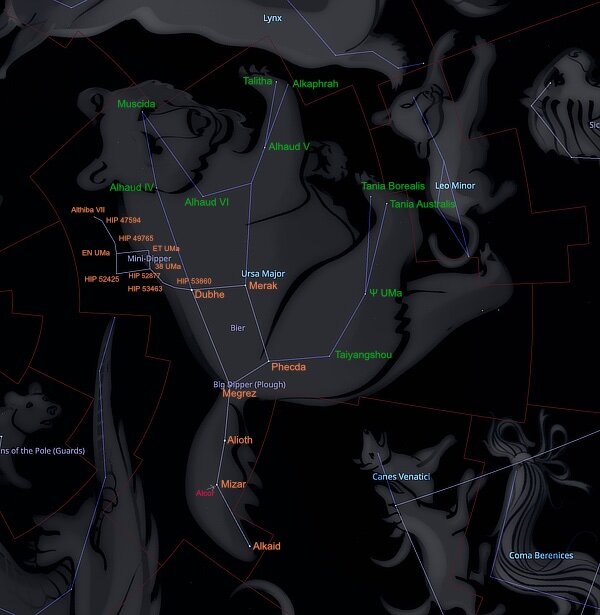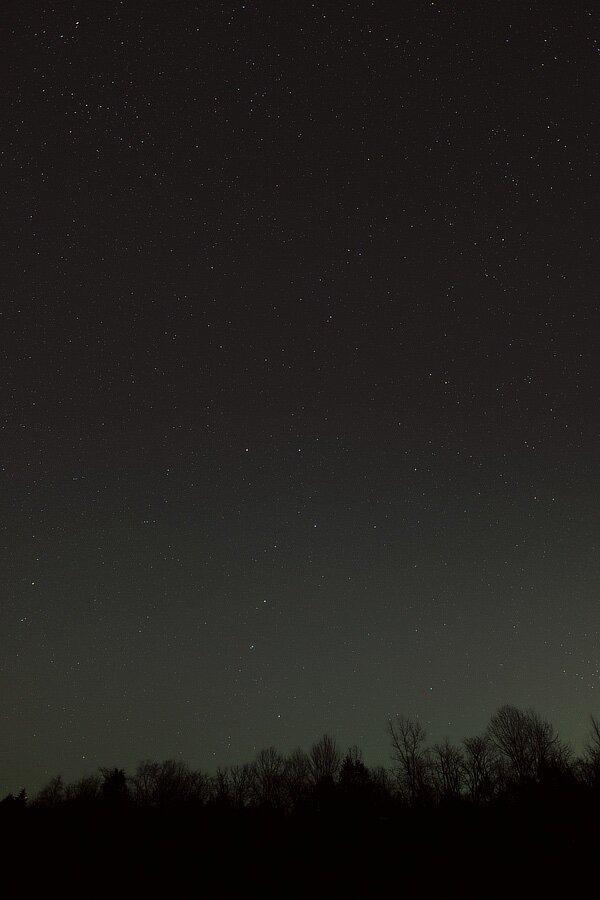
jerryy
-
Posts
1,586 -
Joined
-
Last visited
-
Days Won
245
Content Type
Forums
Gallery
Store
Posts posted by jerryy
-
-
It would be nice if this had an easy to point to cause and say ‘do this instead’ as an answer, but this quickly gets complicated the more you look into it.
Fujifilm does recommend the 2000x series instead of the 1667x series you are using even over the next in line 1800x series.
This link may give you some idea of what to expect (use the 128GB and 256Gb tabs to thin the results table a bit). Your card is not explicitly tested, but the much faster 2000x series is as well as other Lexar cards that are similar to yours. The “all” tab includes results for the 1800x series.
https://www.cameramemoryspeed.com/fuji-x-t3/fastest-sd-cards/
It does get more complicated after that. If you are modifying any of the settings that require the image to be highly processed before saving, this will affect saving speeds, for example changing the Clarity setting can dramatically slow things down regardless of which card you are using,
Another factor is whether or not you are using cards in both slots, in which backup mode, etc. as well as are the cards the same size, rated at the same speed, how old are they, how full are they, how fragmented are they, etc. ???
p.s. Welcome to the forum.
-
Ahoy ye hearties! Hoist ye yon Jolly Roger and Cascade away.
NGC 1502 The Jolly Roger Cluster:


This is the equivalent of 43 minutes, 40 seconds of exposure.
NGC 1502 is a neat little cluster located in the Camelopardalis Constellation. This region of space was thought to be fairly empty by early astronomers, but as you can see, there is a lot there.
Kemble's Cascade (a.k.a. Kemble 1) is named for Father Lucian Kemble, a Canadian Franciscan friar who wrote about it to Walter Scott Houston, an author for the Sky And Telescope magazine. Houston named the asterism for Fr. Kemble and the name "stuck".
NGC 1501 is the Oyster Nebula. A longer focal length telescope is needed to bring this one into good viewing range, but it is well worth the effort.
NGC 1502: https://skyandtelescope.org/online-gallery/ngc-1502/
Camelopardalis Constellation: https://en.wikipedia.org/wiki/Camelopardalis
Kemble's Cascade (and NGC 1501: The Oyster Nebula): https://www.constellation-guide.com/kembles-cascade/
Arrrrrr Matey.
-
1 hour ago, FrankWeiser said:
I own the Fuji X-T1 and X-H1. I own several Fuji lenses but I tend to use 3rd party vintage manual glass which I find quite enjoyable to use. I'm testing a photo here taken from my Flickr account that showcases the Tokina 100-300mm Zoom lens with 1.4 extender.
[url=https://flic.kr/p/2og3ghr][img]https://live.staticflickr.com/65535/52678730517_54489efae3_k.jpg[/img][/url][url=https://flic.kr/p/2og3ghr]300mm 1.4 blue jay[/url] by [url=https://www.flickr.com/photos/92395202@N07/]frankweiser[/url], on Flickr
Welcome to the forum.
Here is your image:

If you copy the link and paste it in to your posting, you will be given the choice of having the link show up as the image (as above) or as just a link that can be clicked.
https://live.staticflickr.com/65535/52678730517_54489efae3_k.jpg
Great photo! Blue Jays are tricky to get good photos like you have, they tend to fly away as soon as the lens cap comes off 😀.
-
Your camera has three different auto white balance settings, you may be using one that is not suitable for the lighting you have to deal with.
Some of the reviews mention this, I have listed two for you to read, the fstoppers one uses an old approach to deal with this: a quick custom white balance, essentially it is the old ‘put a bright white coffee filter over the lens, use the menu to set a custom white balance with a single shot and use that as white balance until the lighting changes’ trick but you can read their version in the article, or try the other auto white balance settings.
https://www.photoreview.com.au/reviews/medium_format/fujifilm-gfx-100-ii/
https://fstoppers.com/education/tips-shooting-fujifilm-gfx-100-405452
The blurry screen image … do you have another camera to get an image so that you can compare that to the image in the file?
p.s. Welcome to the forum.
-
-
Hello,
If you look in the top right-hand corner of each posting, there should be three dots in a row, like this —> … <—, click on them and after a moment or twelve, a small menu should drop down from the dots, the last entry in the menu is ‘Edit’. Choose that and after a moment or three you should be in edit mode for that entry. Note: Only you can edit your entries.
-
-

Dogwood
-
Are you referring to step-up rings?
There are plenty of different sizes available, most camera supplies stores either have them in stock or can get them for you. As a note, get the brass ones if you can, they work better in cold weather, but cost a bit more.
p.s. Welcome to the forum.
-
It sounds like you have Long Exposure Noise Reduction turned on in your menu settings. LENR is a way of removing hot pixels and some other types of noise that can creep into the images when you are taking long exposures.
You can turn it off in the menu and leave it off and get twice as many exposures than you were getting.
p.s. Welcome to the forum.
-
1 hour ago, Astigmatism said:
I haven't tried either the PerGear or the Rokinon. They're full frame fisheyes, which I've never been interested in. But if anybody else has tried them, it'd be great to get more information here.
The Rokinon lens can be used on a full frame body, but it is intended for APS-C bodies:
https://rokinon.com/products/8mm-f3-5-fisheye
I had a copy for a while, it worked pretty well, had good color and nice fishy-ness. If you needed to, you could carefully align the lens horizontally on your tripod and then when using software to finish, you could get a reasonably wide angle de-fished image.
-
Settling in for a nap.

Mourning Dove.
-
Cool!
Have you tried the Rokinon 8mm fisheye?
https://www.bhphotovideo.com/c/product/1039941-REG/rokinon_rk8mbk28_fx_8mm_f_2_8_umc_fish_eye.html
-
-
But Sirius-ly Dog Star...
Of all the neat and interesting or just regular things to see in the night sky, Sirius, The Dog Star in constellation Canis Major, is considered the easiest to find, because it is the brightest star in the night sky. Being close to the Orion Constellation also helps make it easy to find. Sirius is going to continue getting brighter because it is moving toward us, in about 60,000 (60.000) years it will be a very close neighbor.


(This is the equivalent of 28 minutes, 20 seconds worth of exposure).
If you can find Sirius up high enough in the sky, then just below it you should be able to find Messier Object M41, The Mini Beehive Cluster (related in name to Messier M44 the Beehive Cluster). Sirius and M41 are companions, tracking together across the night sky. There are some other interesting objects, clusters and nebulae in that region, probably the most famous is Sh2-308, Dolphin Head Nebula.
Canis Major (Big Dog): https://www.constellation-guide.com/constellation-list/canis-major-constellation/
Sh2-308: https://astrocat.info/sharpless-308-the-dolphin-nebula/
Sh2-304: http://galaxymap.org/cat/view/sharpless/304
Cr-121 (Collinder Open Cluster): https://in-the-sky.org/data/object.php?id=20726
Messier M41: https://www.go-astronomy.com/messier.php?Messier=M41
Sirius: https://www.space.com/21702-sirius-brightest-star.html
Sirius: https://en.wikipedia.org/wiki/Sirius
- MARRIEDGUY9 and George_P
-
 2
2
-
-
It may be possible to reset the camera, pull the main battery out and put the camera on the shelf for about a week or so. Doing that normally would cause the settings to all go back to the defaults from the last firmware update, removing any settings you have stored in the camera.
But it sounds like you will need to take the camera to the repair shop.
p.s. Welcome to the forum and hopefully your camera is fixable.
-
Yup, catadioptric lenses wipe out CA from your images, they have a few drawbacks; the design means they start off at telephoto focal lengths with fixed apertures and there is a teeny tiny “hole” in the image middle (this is not a big issue, it is usually never noticeable, but it is there). They also tend to be a little heavy and occasionally need adjusting to keep the mirror part collimated. They give you pretty good images.
As I recall, Minolta made a catadioptric lens that could auto focus, this was taken over by Sony who still makes the lens for one of their bodies, but no one else makes one. There are several manual focus ones for Fujilfilm’s X-mount bodies.
Achromatic lenses do remove red-blue fringing, you can often find these types in those screw on macro-diopter lenses or in old box landscape cameras. But they have a problem with green fringing as it is not corrected at all.
To get all three fringings, red-blue-green, folks have shifted over to Apochromatic designs. These are found in high end telephoto camera lenses and more often in refractor telescopes — the triplet design. They currently tend to be expensive.
-
The bluish fringing is chromatic aberration.
It is a fact of life for photography, especially for high contrasty images taken with zoom lens, and quite often for images taken with zoom lenses set to wide open apertures, maximum or minimum zoom length in high contrasty scenes.
If you have software for processing images, or for converting raw images, look for tools that reduce CA, often called color fringing. With practice you may be able to reduce it to not being noticeable. There are lots and lots of tutorials on the internet about reducing CA.
If you only shoot jpeg images, try stopping the lens aperture down some, or kick the zoom back a little. CA tends to be worse at the edges rather than the frame middle for what that is worth.
Avoiding high contrasty scenes does work, but that is not realistic, so try to get it to the level where you can be happy with the image and do not lose sleep over it.
The CA in the image you posted is not bad at all, you almost have to start pixel peeping, with a little work you can get rid of it, Your lens seems okay, based on this shot.
p.s. Welcome to the forum.
-
One way you can tell is if the ring continually rotates or has hard stops. If the ring rotates all the way around and keeps going, it is by-wire or electronic. If it has hard stops, it is mechanical. The XF-14mm f2.8 lens is a mecha lens.
-
-
8 hours ago, paul A said:
How do I turn off the electronic shutter in the menu - the option is grayed out and I cannot select the mechanical option
If you set the shutter to 10”, (ten seconds) and try to capture an image, what happens?
p.s. Welcome to the forum.
p.p.s. If you have the shutter speed set too high, over 1/4000, only the electronic shutter will be available, — faster than 1/4000 is too fast for the mechanical shutter.
-
-
Big Bear, Big Dipper...
Every now and then one of the images I post will have an asterism, which is just a pattern in the stars that is interesting to see, but the stars have no relation to each other unlike stars in constellations. There is a famous one where both happen at the same time, the stars are in an asterism and in a constellation...

This is a screen capture from Stellarium, with annotated star names added on top. All of the stars are part of constellation Ursa Major. The blue-ish colored lines and the white-ish colored lines connect the main constellation stars, the white-ish colored lines alone form asterisms. The orange-ish colored labels are for the stars in the two asterisms.

This is the equivalent of an 80 seconds exposure.
As a side note: Alcor and Mizar are a famous double star pair, very easy to see visually or with binoculars or telescopes.
https://www.constellation-guide.com/constellation-list/ursa-major-constellation/
https://www.space.com/ursa-major-constellation-great-bear






.jpg.c0274c8bd315a9892ce7f10ba84bab3f.jpg)












Fuji Flowers
in Nature & Wildlife
Posted
Daffodils
(Appalachian) Eastern Red Bud